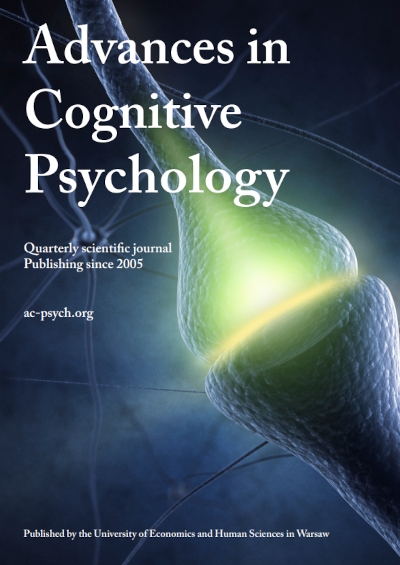Archive of all online content
-
Volume 21 Issue 4
pp. 309-500
(16 November 2025) -
Volume 21 Issue 3
pp. 212-308
(2 September 2025) -
Volume 21 Issue 2
pp. 120-211
(25 May 2025) -
Volume 21 Issue 1
pp. 1-93
(11 March 2025)
-
Volume 20 Issue 4
pp. 237-388
(20 November 2024) -
Volume 20 Issue 3
pp. 158-236
(19 August 2024) -
Volume 20 Issue 2
pp. 80-157
(24 June 2024) -
Volume 20 Issue 1
pp. 1-79
(1 March 2024)
-
Volume 19 Issue 4
pp. 1-105
(27 December 2023) -
Volume 19 Issue 3
pp. 211-333
(25 July 2023) -
Volume 19 Issue 2
pp. 111-200
(30 June 2023) -
Volume 19 Issue 1
pp. 1-110
(31 March 2023)
-
Volume 18 Issue 4
pp. 243-303
(31 December 2022) -
Volume 18 Issue 3
pp. 165-202
(30 September 2022) -
Volume 18 Issue 2
pp. 85-164
(30 June 2022) -
Volume 18 Issue 1
pp. 1-84
(31 March 2022)
-
Volume 17 Issue 4
pp. 250-291
(31 December 2021) -
Volume 17 Issue 3
pp. 193-249
(30 September 2021) -
Volume 17 Issue 2
pp. 99-192
(30 June 2021) -
Volume 17 Issue 1
pp. 1-98
(31 March 2021)
-
Volume 16 Issue 4
pp. 291-369
(31 December 2020) -
Volume 16 Issue 3
pp. 176-290
(30 September 2020) -
Volume 16 Issue 2
pp. 85-175
(30 June 2020) -
Volume 16 Issue 1
pp. 1-84
(31 March 2020)
-
Volume 15 Issue 4
pp. 236-317
(31 December 2019) -
Volume 15 Issue 3
pp. 169-235
(30 September 2019) -
Volume 15 Issue 2
pp. 75-168
(30 June 2019) -
Volume 15 Issue 1
pp. 1-74
(31 March 2019)
-
Volume 14 Issue 4
pp. 150-208
(31 December 2018) -
Volume 14 Issue 3
pp. 62-150
(30 September 2018) -
Volume 14 Issue 2
pp. 38-61
(30 June 2018) -
Volume 14 Issue 1
pp. 1-37
(31 March 2018)
-
Volume 13 Issue 4
pp. 267-322
(31 December 2017) -
Volume 13 Issue 3
pp. 190-266
(30 September 2017) -
Volume 13 Issue 2
pp. 121-189
(30 June 2017) -
Volume 13 Issue 1
pp. 1-120
(31 March 2017)
-
Volume 12 Issue 4 (special issue)
pp. 150-235
(31 December 2016) -
Volume 12 Issue 3
pp. 130-149
(30 September 2016) -
Volume 12 Issue 2
pp. 67-129
(30 June 2016) -
Volume 12 Issue 1
pp. 1-66
(31 March 2016)
-
Volume 11 Issue 4
pp. 118-135
(31 December 2015) -
Volume 11 Issue 3
pp. 64-117
(30 September 2015) -
Volume 11 Issue 2
pp. 31-63
(30 June 2015) -
Volume 11 Issue 1
pp. 1-30
(31 March 2015)
-
Volume 10 Issue 4
pp. 119-155
(31 December 2014) -
Volume 10 Issue 3
pp. 81-118
(30 September 2014) -
Volume 10 Issue 2
pp. 32-80
(30 June 2014) -
Volume 10 Issue 1
pp. 1-31
(27 February 2014)
-
Volume 9 Issue 4
pp. 156-223
(31 December 2013) -
Volume 9 Issue 3
pp. 112-155
(24 October 2013) -
Volume 9 Issue 2
pp. 53-111
(30 June 2013) -
Volume 9 Issue 1
pp. 1-52
(31 March 2013)
-
Volume 8 Issue 4
pp. 267-295
(31 December 2012) -
Volume 8 Issue 3
pp. 210-266
(27 September 2012) -
Volume 8 Issue 2
pp. 70-209
(28 June 2012) -
Volume 8 Issue 1
pp. 1-69
(29 March 2012)
-
Volume 7 Issue 2
pp. 55-156
(31 December 2011) -
Volume 7 Issue 1
pp. 1-54
(31 March 2011)
-
Volume 6 Issue 6
pp. 1-141
(31 December 2010)
-
Volume 5 Issue 5
pp. 1-134
(31 December 2009)
-
Volume 4 Issue 1
pp. 1-14
(31 March 2008)
-
Volume 3 Issue 4
pp. 419-465
(31 December 2007) -
Volume 3 Issue 3
pp. 363-417
(30 September 2007) -
Volume 3 Issue 1
pp. 1-361
(31 March 2007)
-
Volume 2 Issue 4
pp. 239-276
(31 December 2006) -
Volume 2 Issue 2
pp. 99-237
(30 June 2006) -
Volume 2 Issue 1
pp. 1-97
(31 March 2006)
-
Volume 1 Issue 1
pp. 1-16
()
Volume 11 Issue 4 (2015)
Word Detection in Sung and Spoken Sentences in Children With Typical Language Development or With Specific Language Impairment
Clément Planchou, Sylvain Clément, Renée Béland, Nia Cason, Jacques Motte, Séverine Samson

Séverine Samson, Department of Psychology University of Lille 3, Pont de Bois - BP 60149 59 653 Villeneuve d'Ascq Cedex France.
E-mail: severine.samson@univ-lille3.fr
Background: Previous studies have reported that children score better in language tasks using sung rather than spoken stimuli. We examined word detection ease in sung and spoken sentences that were equated for phoneme duration and pitch variations in children aged 7 to 12 years with typical language development (TLD) as well as in children with specific language impairment (SLI), and hypothesized that the facilitation effect would vary with language abilities. Method: In Experiment 1, 69 children with TLD (7–10 years old) detected words in sentences that were spoken, sung on pitches extracted from speech, and sung on original scores. In Experiment 2, we added a natural speech rate condition and tested 68 children with TLD (7–12 years old). In Experiment 3, 16 children with SLI and 16 age-matched children with TLD were tested in all four conditions. Results: In both TLD groups, older children scored better than the younger ones. The matched TLD group scored higher than the SLI group who scored at the level of the younger children with TLD. None of the experiments showed a facilitation effect of sung over spoken stimuli. Conclusions: Word detection abilities improved with age in both TLD and SLI groups. Our findings are compatible with the hypothesis of delayed language abilities in children with SLI, and are discussed in light of the role of durational prosodic cues in words detection.
Keywords: word detection, sung sentences, language development, Specific Language ImpairmentHandwriting or Typewriting? The Influence of Pen or Keyboard-Based Writing Training on Reading and Writing Performance in Preschool Children
Markus Kiefer, Stefanie Schuler, Carmen Mayer, Natalie M. Trumpp, Katrin Hille, Steffi Sachse

Markus Kiefer, Department of Psychiatry, Section for Cognitive Electrophysiology, Ulm University, Leimgrubenweg 12, 89075 Ulm, Germany.
E-mail: Markus.Kiefer@uni-ulm.de.
Digital writing devices associated with the use of computers, tablet PCs, or mobile phones are increasingly replacing writing by hand. It is, however, controversially discussed how writing modes influence reading and writing performance in children at the start of literacy. On the one hand, the easiness of typing on digital devices may accelerate reading and writing in young children, who have less developed sensory-motor skills. On the other hand, the meaningful coupling between action and perception during handwriting, which establishes sensory-motor memory traces, could facilitate written language acquisition. In order to decide between these theoretical alternatives, for the present study, we developed an intense training program for preschool children attending the German kindergarten with 16 training sessions. Using closely matched letter learning games, eight letters of the German alphabet were trained either by handwriting with a pen on a sheet of paper or by typing on a computer keyboard. Letter recognition, naming, and writing performance as well as word reading and writing performance were assessed. Results did not indicate a superiority of typing training over handwriting training in any of these tasks. In contrast, handwriting training was superior to typing training in word writing, and, as a tendency, in word reading. The results of our study, therefore, support theories of action-perception coupling assuming a facilitatory influence of sensory-motor representations established during handwriting on reading and writing.
Keywords: written language acquisition, literacy training, embodied cognition, digital media, preschool childrenWriting, Reading, and Listening Differentially Overload Working Memory Performance Across the Serial Position Curve
Richard Tindle, Mitchell G. Longstaf

Richard Tindle, Southern Cross University, Hogbin Dr, Coffs Harbour NSW 2450, Australia.
E-mail: Richard.Tindle@scu.edu.au
Previous research has assumed that writing is a cognitively complex task, but has not determined if writing overloads Working Memory more than reading and listening. To investigate this, participants completed three recall tasks. These were reading lists of words before recalling them, hearing lists of words before recalling them, and hearing lists of words and writing them as they heard them, then recalling them. The experiment involved serial recall of lists of 6 words. The hypothesis that fewer words would be recalled overall when writing was supported. Post-hoc analysis revealed the same pattern of results at individual serial positions (1 to 3). However, there was no difference between the three conditions at serial position 4, or between listening and writing at positions 5 and 6 which were both greater than recall in the reading condition. This suggests writing overloads working memory more than reading and listening, particularly in the early serial positions. The results show that writing interferes with working memory processes and so is not recommended when the goal is to immediately recall information.
Keywords: working memory, reading, listening, writing, serial recallHow the Learning Path and the Very Structure of a Multifloored Environment Influence Human Spatial Memory
Laurent Dollé, Jacques Droulez, Daniel Bennequin, Alain Berthoz, Guillaume Thibault

Laurent Dollé, CEA Tech, Technocampus Océan 5, rue de l'Halbrane, 44340 Bouguenais, France.
E-mail: laurent.dolle@cea.fr
Few studies have explored how humans memorize landmarks in complex multifloored buildings. They have observed that participants memorize an environment either by floors or by vertical columns, influenced by the learning path. However, the influence of the building’s actual structure is not yet known. In order to investigate this influence, we conducted an experiment using an object-in-place protocol in a cylindrical building to contrast with previous experiments which used rectilinear environments. Two groups of 15 participants were taken on a tour with a first person perspective through a virtual cylindrical three-floored building. They followed either a route discovering floors one at a time, or a route discovering columns (by simulated lifts across floors). They then underwent a series of trials, in which they viewed a camera movement reproducing either a segment of the learning path (familiar trials), or performing a shortcut relative to the learning trajectory (novel trials). We observed that regardless of the learning path, participants better memorized the building by floors, and only participants who had discovered the building by columns also memorized it by columns. This expands on previous results obtained in a rectilinear building, where the learning path favoured the memory of its horizontal and vertical layout. Taken together, these results suggest that both learning mode and an environment’s structure influence the spatial memory of complex multifloored buildings.
Keywords: navigation and spatial memory, spatial cognition, representation


